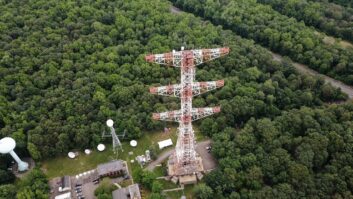
A bird conservation group estimates that approximately 750 tall towers in the United States have converted to flashing lights but that another 15,000 towers should make the switch.
Per recently adopted FCC and FAA guidelines, on which we’ve reported, tower owners are encouraged to switch or reprogram steady-burning red or white lights for flashing, to help birds and save energy costs while still protecting aviation. The American Bird Conservancy provided the 750-tower estimate in a new blog post. (New and altered towers standing more than 350 feet tall may only use flashing lights at night, under the new rules; but the FCC and FAA have been encouraging owners of older structures to extinguish non-flashing lights as well.)
The role of both tower lighting and guy wires in bird fatalities has long been a contentious one. ABC is among those that say steady red or white lights can disorient migratory birds flying at night, and it cited research that a reported 7 million birds die a year in collisions with towers.
The group believes it is the only national organization with a program dedicated to addressing the problem of bird mortality caused by collisions with buildings (its website shown at right). The manager of its Bird Collision Campaign, Dr. Christine Sheppard, writes that flashing lights can reduce night-time bird fatality rates by as much as 70 percent.
The FCC and FAA’s guidelines provide steps for how towers taller than 350 feet above ground level and built before 2015 can convert to flashing lights. Guidelines for towers between 150- and 350-feet are expected to be released soon.
In an press release earlier this year, the FAA stated that “New tower lighting schemes should now follow the revised guidance (PDF), and operators of towers with the old lighting system should submit plans explaining how and when they will transition to the new standards.”
Related:
Relief for Tower Owners and Migratory Birds (Aug. 2016)
FAA Releases New Marking and Lighting Rules (Dec. 2015)







